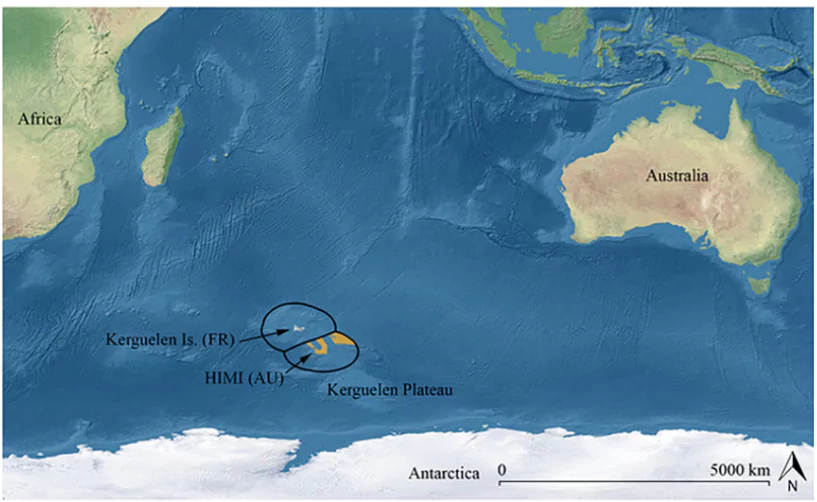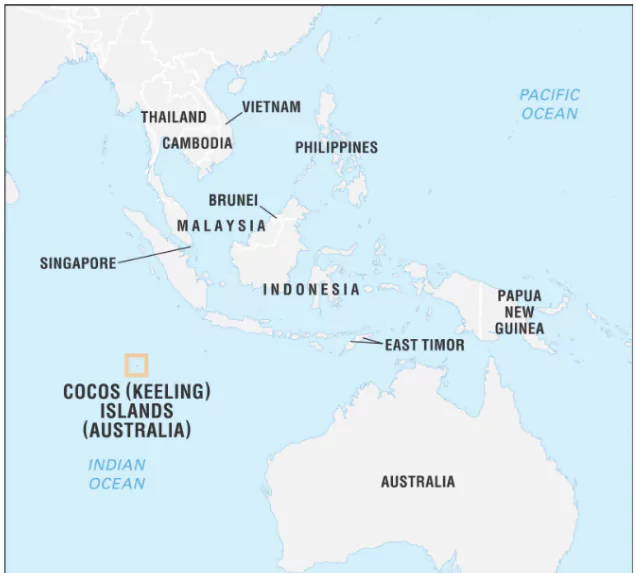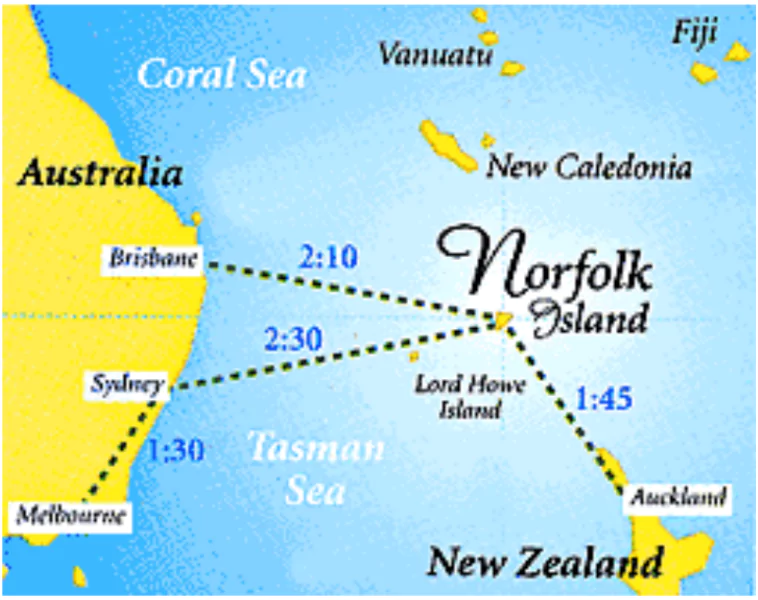Sentinelese Tribe
Context: A 24-year-old US citizen, Mykhailo Viktorovych Polyakov, was arrested for illegally visiting the island where uncontacted indigenous communities live.
North Sentinel Island
- North Sentinel Island is part of the Andaman and Nicobar Islands in India.
- It is located in the Bay of Bengal and remains one of the most isolated places in the world.
- The island is home to the Sentinelese tribe, who live in voluntary isolation.
- Legal Protection and Travel Restrictions
- The island is protected under Indian law to prevent external contact.
- The Andaman and Nicobar Islands Protection of Aboriginal Tribes Regulation, 1956:
- Prohibits travel to the island.
- Restricts outsiders from coming within five nautical miles (9 km).
- Reason for restrictions:
- The Sentinelese have no immunity to modern diseases, which could be deadly for them.
- The Indian government respects their wish for isolation and does not interfere in their lives.
Sentinelese Tribe
- The Sentinelese are a pre-neolithic, negrito tribe who live in North Sentinel Island of the Andamans.
- They are an indigenous tribe living without contact with the outside world.
- They follow a hunter-gatherer lifestyle and live in small groups.
- The tribe defends its territory aggressively and does not welcome outsiders.
- Protection Regulation: They are protected under the Andaman and Nicobar Islands (Protection of Aboriginal Tribes) Regulation, 1956.
- Sentinelese are also listed under Particularly Vulnerable Tribal Groups (PVTGs) by the government of India.
Vibe Coding
Context: ‘Vibe coding’ is the latest trend catching up in the Technology and AI space.
- AI companies are releasing a series of new models designed to help users generate code, even if they don’t know coding.
About Vibe Coding
- The term is coined by OpenAI co-founder and former Tesla employee Andrej Karpathy
- Vibe Coding is a new style of programming where developers let an AI large language model (LLM) do the heavy lifting of writing code while they guide it with high-level instructions.
- The process focuses on the “vibe” of the software, rather than the code
- Working Mechanism: Generative AI tools are used by the user by typing text prompts to them describing the kind of code they want.
- The AI model generates the code which simply needs to be copy pasted to get the desired output.
- Tools & Frameworks:
- Large Language Models (LLMs): At the core of most vibe coding tools are advanced LLMs trained on source code.
- Examples: OpenAI’s Codex and GPT-4, Google’s PaLM 2 Code
- GitHub Copilot: Copilot is developed by GitHub and OpenAI and uses the Codex model to suggest code completions and even entire functions based on the current file’s contents and comments.
- ChatGPT and AI chatbots: Developers use it to generate boilerplate code, get help with algorithms, or even have it draft entire mini-applications
- Replit Agent / Ghostwriter: It enables users to build and deploy apps through AI-powered chat where a user can literally text or voice-message their app idea on a phone, and the AI will build, deploy, and host the app.
- Advantages:
- Natural language Prompt: At the heart of vibe coding is expressing the desired behavior or feature in natural language preferably English.
- AI as a coding partner: The AI functions as a pair-programmer or assistant. The human’s role shifts to guiding the AI, reviewing its output, and clarifying requirements.
- Iterative feedback loop: Vibe coding is highly iterative with the process being, to give a prompt, code, run, feedback, and revised code, until the software behaves as desired.
- Voice and multimodal inputs: Vibe coding often embraces new input methods beyond the keyboard like using voice commands to “chat” with the AI assistant.
- Example: Karpathy has used an AI speech-to-text tool (OpenAI’s Whisper, via a tool called SuperWhisper) to speak his programming instructions to the AI.
Rare Copper Plates of Devaraya I’s Coronation Unveiled
Context: A set of copper plates dating back to the early 15th Century from the reign of Devaraya I of the Sangama Dynasty were unveiled in Bengaluru by Falcon Coins Gallery with the Archaeological Survey of India (ASI).
Unique Features of the Plates
- Languages: Inscriptions are in Sanskrit and Kannada, using Nagari characters.
- Seal Design: Unlike the traditional Varaha (boar) emblem of the Vijayanagara Empire, the seal features an image of Vamana, an avatar of Vishnu.
- Dating: The plates are dated Saka 1328, corresponding to November 5, 1406 CE, marking the exact day of Devaraya I’s coronation.
- Significance:
- Lineage Traced: The plates trace the dynasty’s roots from Chandra, Yadu, Sangama, and his sons Harihara, Kampa, Bukka, Marapa, and Muddapa.
- Confirmation of Coronation: Provides authentic confirmation of Devaraya I’s coronation and genealogy.
- Details of the Royal Grant: The plates record that Devaraya I, son of Harihara, made a land grant during his coronation.
Sangama Dynasty
- About: The Sangama Dynasty was the first ruling dynasty of the Vijayanagara Empire.
- Founded In: It was founded in 1336 CE by Harihara I and Bukka Raya I.
- Capital: Vijayanagara, on the south bank of the Tungabhadra River.
Kannadippaya: Kerala’s First Tribal Handicraft to Get GI Tag
Context: Kannadippaya, a unique tribal handicraft from Kerala, has received the prestigious Geographical Indication (GI) tag.
About Kannadippaya
- Kannadippaya is a traditional tribal mat with a mirror-like reflective pattern.
- Offers warmth in winter and a cooling effect in summer.
- Material Used: Made from reed bamboo (Teinostachyum wightii), locally known as:
Njoonjileetta, Njoojoora, Ponneetta, Meieeta, Neytheetta
- Cultural Significance: Historically offered to kings as a symbol of respect by tribal communities.
- Significance of GI tag: This recognition ensures market protection and provides a global platform for the traditional tribal craft.
Dharti Aaba TribePreneurs 2025
Context: The Government of India is celebrating the 150th birth anniversary of Bhagwan Birsa Munda under Janjatiya Gaurav Varsh, promoting self-sufficiency and economic independence.
- Dharti Aaba TribePreneurs 2025 aligns with this vision by fostering sustainable opportunities for Scheduled Tribe (ST) entrepreneurs.
About Dharti Aaba TribePreneurs 2025
- A flagship initiative of the Ministry of Tribal Affairs (MoTA), designed to empower ST entrepreneurs.
- The initiative is part of the government’s commitment to strengthening the tribal startup ecosystem under the 100-day action plan.
- Organized as part of Startup Mahakumbh 2025, scheduled from April 3-5, 2025, at Bharat Mandapam, New Delhi.
- Aims to provide mentorship, networking, and funding opportunities to tribal-led startups.
Significance of Dharti Aaba TribePreneurs 2025
- Dharti Aaba TribePreneurs 2025 is transforming the tribal startup landscape, promoting self-reliance and innovation.
- With support from key stakeholders, the initiative is set to contribute to an inclusive and resilient economy.
Smoot-Hawley Tariff
Context: Experts are comparing Trump’s tariff policies with Smoot-Hawley Tariff Act of 1930, warning of greater impact due to today’s larger trade volume (14% of US GDP).
About the Smoot-Hawley Tariff Act
- The Smoot-Hawley Tariff Act of 1930, designed to protect American industries, ultimately worsened the Great Depression by triggering a global trade war and economic decline.
- The Act was sponsored by Senator Reed Smoot and Rep. Willis Hawley to raise tariffs on 20,000 imported goods.
- President Herbert Hoover signed the Act into law despite opposition from over 1,000 economists urging a veto.
- Initially aimed at protecting American farmers, the bill expanded after the 1929 stock market crash.
- Economic Impact of the Smoot-Hawley Tariff Act
- Tariffs increased on 25% of imported goods, making foreign products expensive.
- US exports dropped by 28-32% as trading partners retaliated with their own tariffs.
- US imports from Europe fell from $1,334 million in 1929 to $390 million in 1932.
- Global trade collapsed by 66% between 1929 and 1934, worsening the economic downturn.
- Retaliation and Trade War: Canada and European nations imposed counter-tariffs, boycotts, and trade restrictions.
- The Act hindered economic recovery worldwide, worsening the post-World War I recession.
- Repeal and Policy Shift: President Franklin D. Roosevelt signed the Reciprocal Trade Agreements Act (1934) to remove tariffs and shift trade policy control to the White House.
- This enabled bilateral trade agreements, reversing the damage caused by Smoot-Hawley.
Heard and McDonald Islands
Context: Recently, Donald Trump has imposed a 10% tariff on imports from the Heard and McDonald Islands, where only penguins and US military live.
- In the list are three other Australian external territories: Cocos (Keeling) Islands, Christmas Island, and Norfolk Island.
About Heard Island and McDonald Islands
- An Australian external territory comprising a volcanic group of mostly barren Antarctic islands, remote sub-Antarctic volcanic islands located in the southern Indian Ocean.
- About halfway between Australia and South Africa and 1,700 kilometers north of Antarctica.

About Cocos (Keeling) Islands
- Remote territory of Australia in the eastern Indian Ocean.
- Approximately midway between Australia and Sri Lanka

About Christmas Island
- An Australian territory in the Indian Ocean, lying south of Java, Indonesia.
Norfolk Island
An external territory of Australia located in the Pacific Ocean between New Zealand and New Caledonia.

![]() 4 Apr 2025
4 Apr 2025




